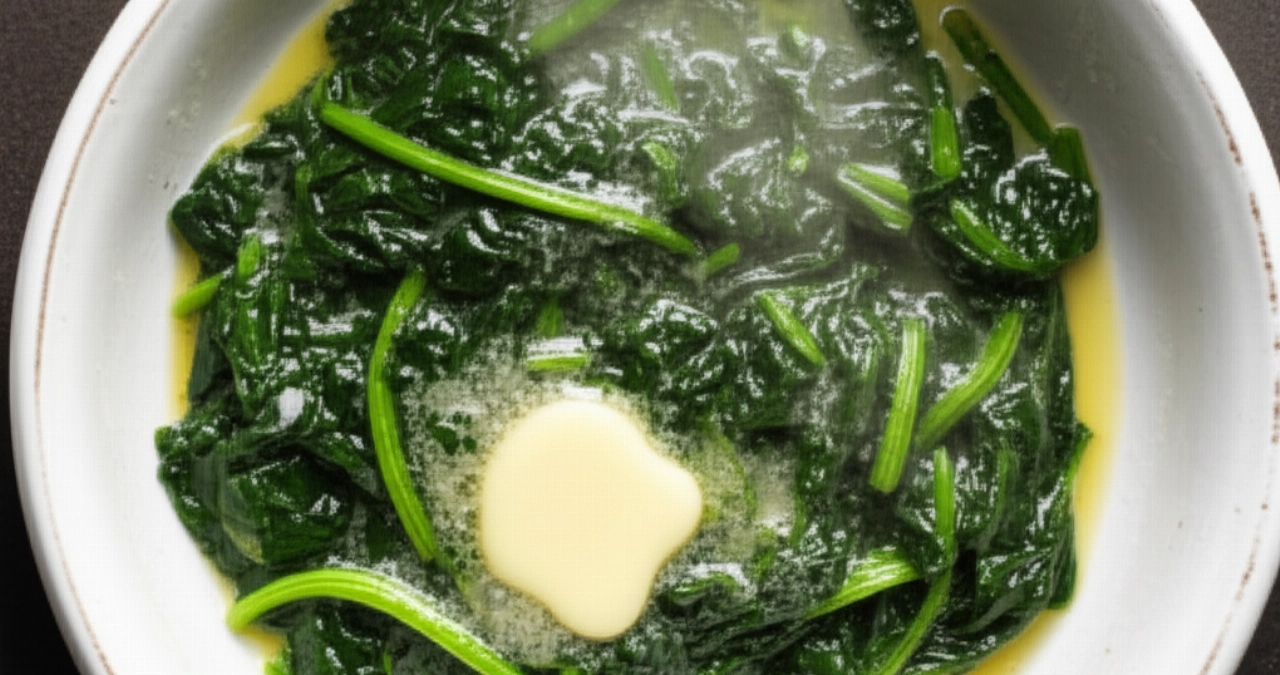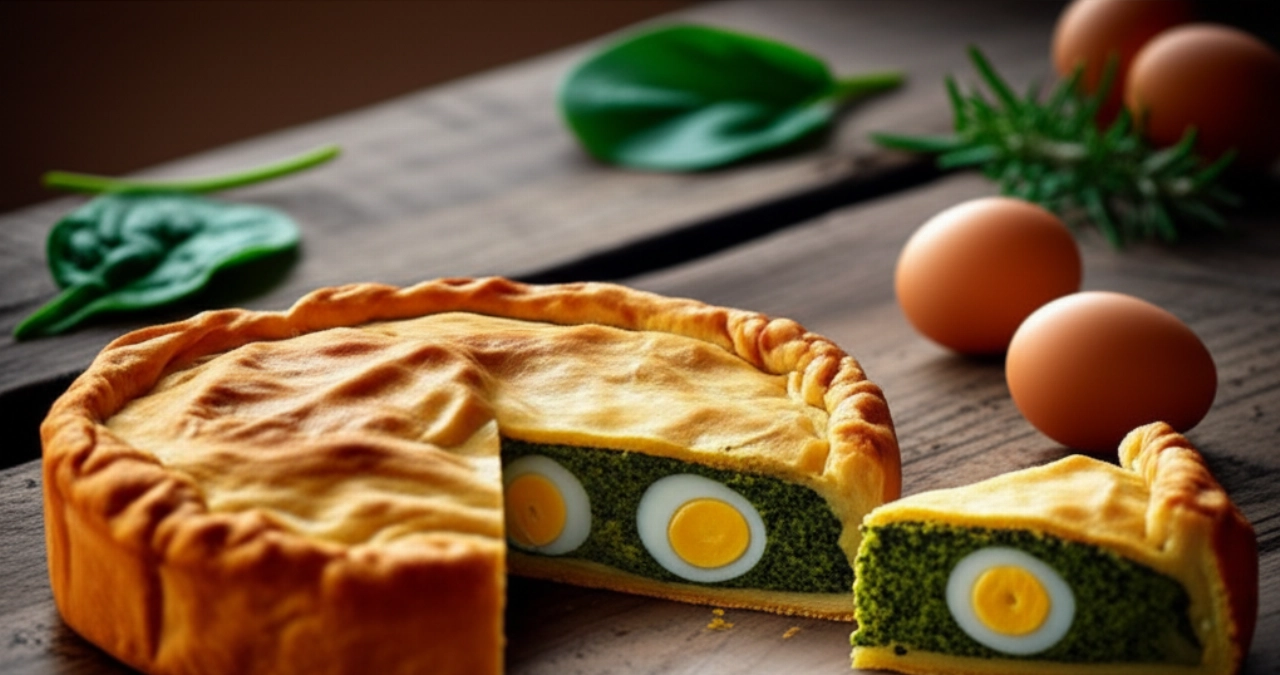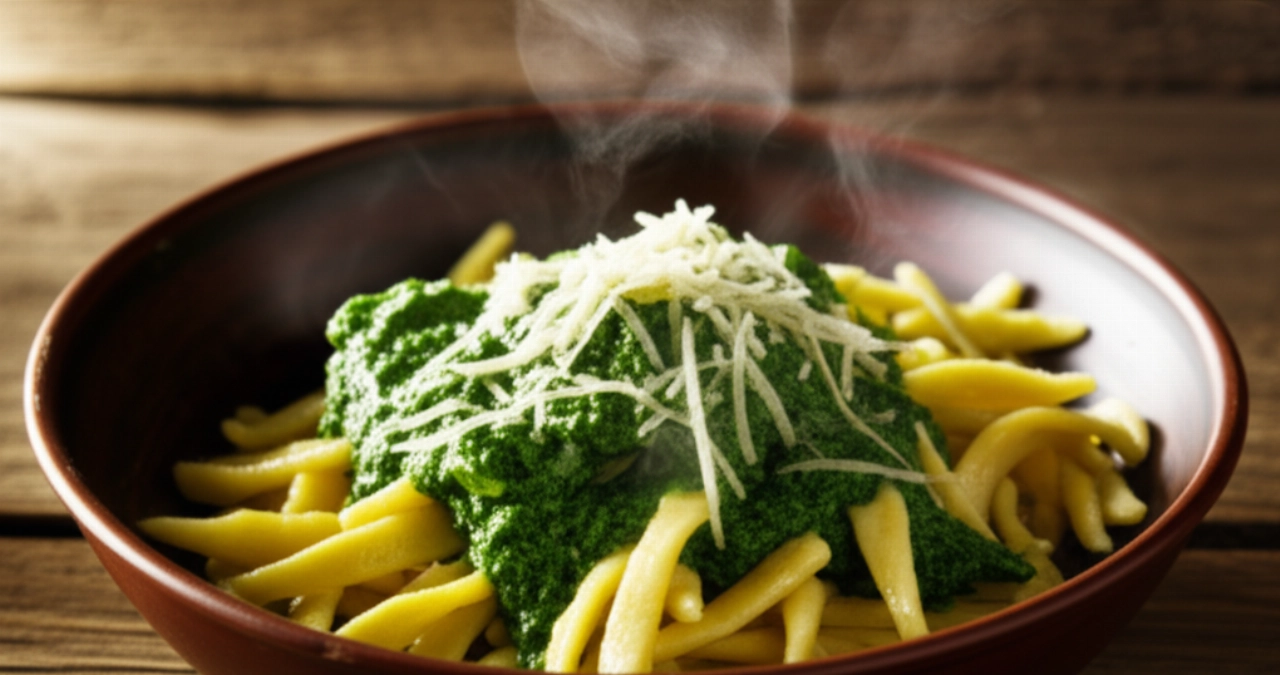Do you dream of bringing homemade ravioli to the table, with that thin pasta sheet and a filling so creamy it makes you close your eyes at the first bite?
Too often, however, the result is a dry filling, pasta that breaks, or, worse, that remains gummy. The fear of making mistakes and wasting precious ingredients can discourage even the most willing.
Make yourself comfortable, because today I'm revealing all the secrets to preparing the best and most perfect Ricotta and Spinach Ravioli you've ever tasted. Not just a simple recipe, but a sure guide that will lead you to guaranteed success!
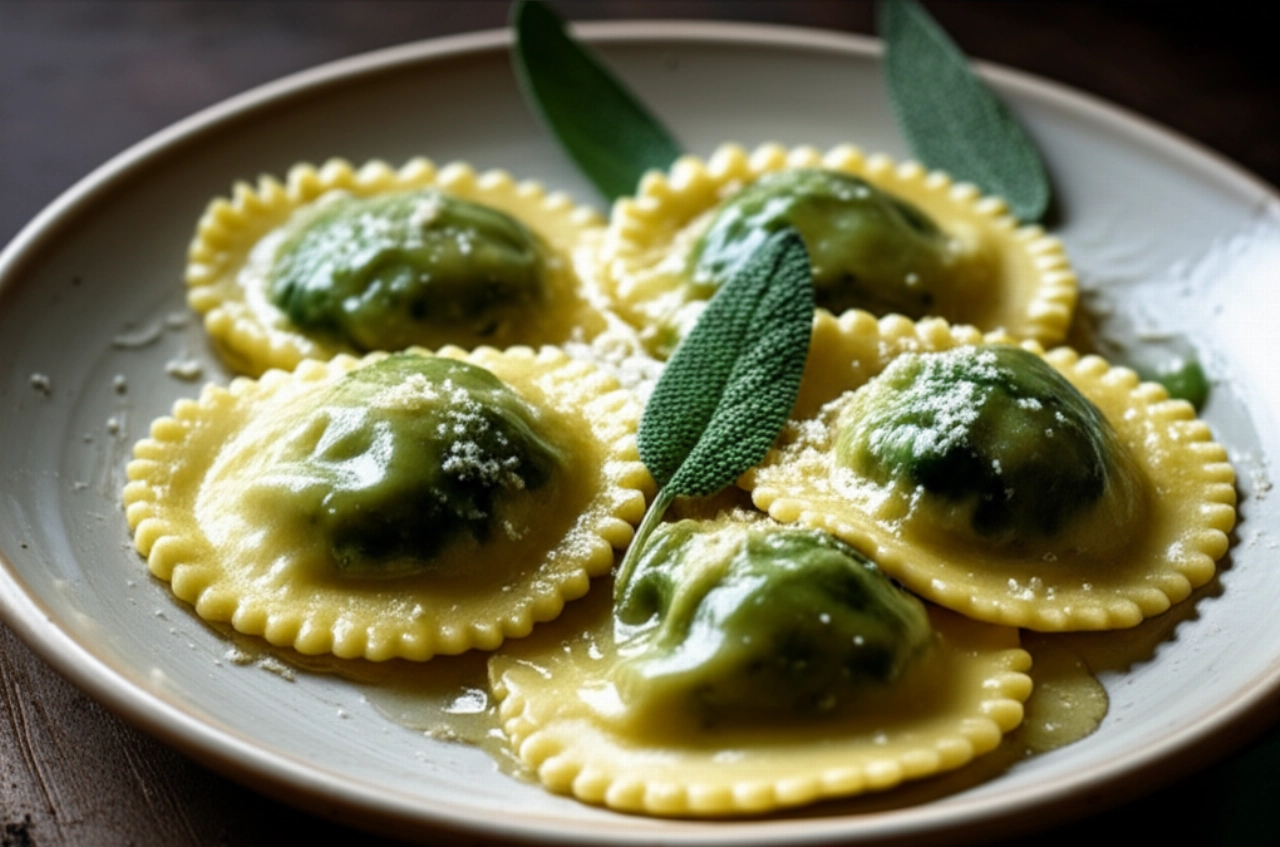
The Secret of Our Ravioli: Harmony Between Velvety Filling and Silky Pasta Sheet
Our promise is clear: no more ravioli with dry filling or gummy pasta sheets! I'll guide you step by step to achieve homemade ravioli that melt in your mouth, with a velvety filling and a pasta that perfectly embraces the sauce. It will be a triumph of flavors and textures, just like grandma used to make them.
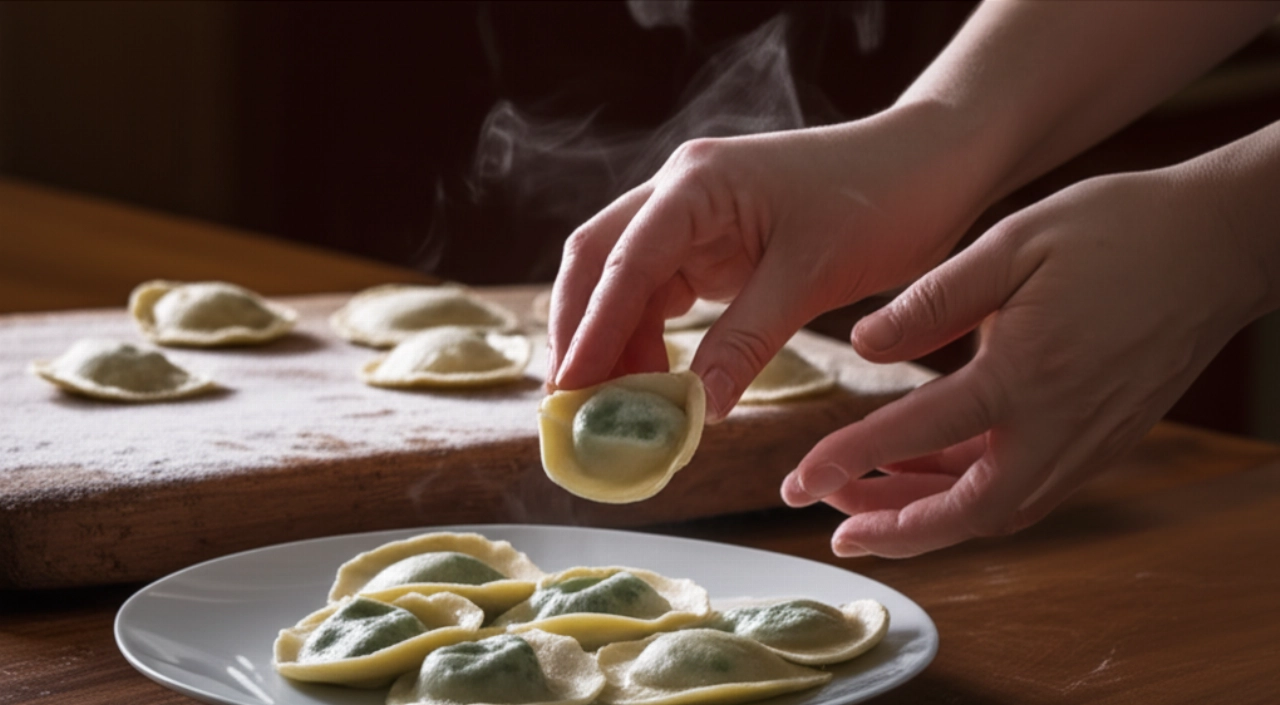
Ingredients for Perfect Ravioli: The Choice That Makes the Difference
It's not enough to have the right ingredients, you need to know why they are right! Here's what you need and why:
- Fresh sheep's milk ricotta: Forget cow's milk ricotta, often too watery. Sheep's milk ricotta, drier and more flavorful, is the base for a creamy but compact filling that won't release water during cooking.
- Fresh spinach: Always better fresh and well-squeezed after cooking. If using frozen, make sure to thaw and squeeze them forcefully, otherwise the filling will be too wet and the ravioli will break.
- Aged Parmigiano Reggiano PDO: Not just any cheese! Parmigiano Reggiano, with its savoriness and aroma, binds the filling and gives it that essential umami touch. Choose one aged at least 24 months.
- Fresh Category A eggs: They are used to bind the pasta dough and give structure to the filling. Choose very fresh eggs; the yolk should be firm and orange.
- '00' soft wheat flour: The queen of fresh pasta. '00' ensures an elastic pasta sheet, easy to work with and that holds up well to cooking. For an extra touch, you can use 70% '00' and 30% durum wheat semolina for greater tenacity.
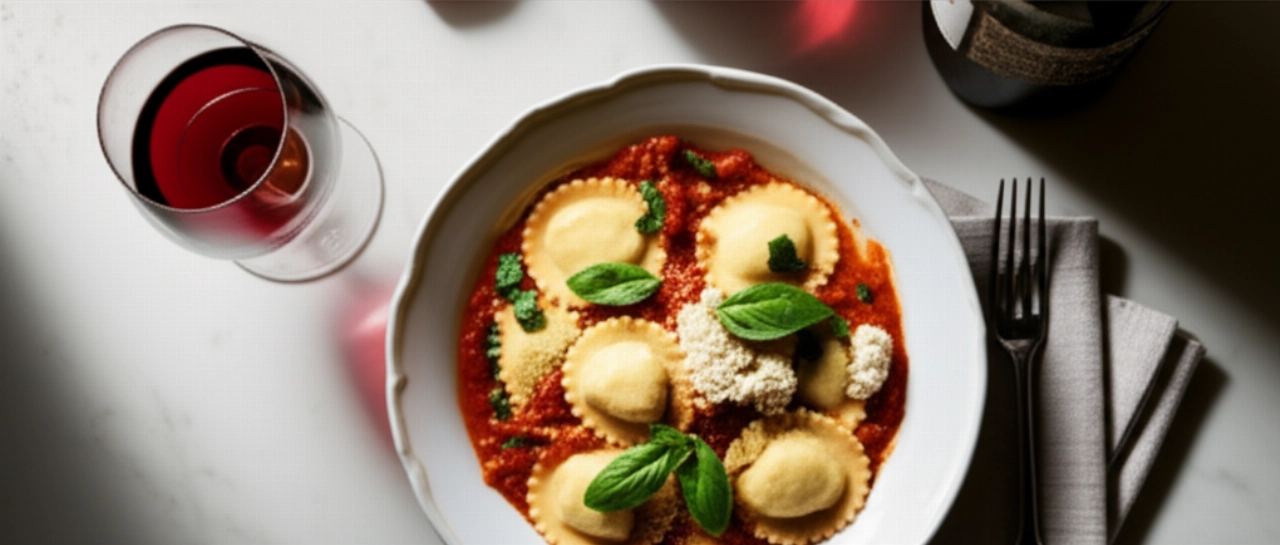
The 3 Mistakes That Ruin Your Ravioli (and How to Avoid Them)
I've seen too many people get discouraged by these common mistakes. But you, with me, won't make them!
- Overly watery filling: The number one enemy! If the spinach isn't well-squeezed or the ricotta is too wet, the filling will release water during cooking, making the ravioli soft or causing them to break. Solution: squeeze the spinach with a clean cloth until every drop comes out, and if the ricotta is very wet, let it drain in a colander for about an hour.
- Pasta sheet too thick or too thin: A pasta sheet that's too thick makes the ravioli gummy; too thin, it breaks. Perfection is when you can almost see your hand through the sheet. Solution: use a pasta machine and pass the dough through multiple times, gradually reducing the thickness to the second-to-last or last setting, depending on your machine.
- Too much filling or poor sealing: Overfilling the ravioli makes them burst. Not sealing them well makes them open. Solution: place a small amount of filling in the center, leaving space around the edges. Seal by pressing firmly with your fingers, removing air, and then use a fluted pastry wheel for a clean cut and secure closure.
The Magic Touch: My Grandma's Tip for a Velvety Filling
Grandma, when preparing the filling, didn't just mix. After squeezing the spinach and combining the ricotta and Parmigiano, she always added a pinch of freshly grated nutmeg and, here's the trick, a teaspoon of very fine breadcrumbs. 'It helps absorb residual moisture and makes the filling even more velvety, without weighing it down,' she used to say. A small gesture that makes a huge difference, believe me!
Let's Prepare Your Ricotta and Spinach Ravioli Together: The Step-by-Step Guide
Ready to get your hands dirty? Follow each step carefully, and success will be guaranteed.
For the Pasta Sheet:
- Prepare the well: On a pastry board, pour the flour into a well shape. Create a hole in the center and crack the eggs into it.
- Knead with love: With a fork, start beating the eggs, gradually incorporating flour from the edges. When the dough begins to solidify, knead it with your hands for at least 10-15 minutes, until you get a smooth, elastic, and homogeneous ball. Don't rush, this is where the magic happens!
- Essential rest: Wrap the dough ball in plastic wrap and let it rest at room temperature for at least 30 minutes (an hour is better). This will relax the gluten and make the pasta sheet easier to roll out.
For the Filling:
- Cook the spinach: Wash the spinach and cook it in a pan with only the washing water for a few minutes, until it wilts.
- Squeeze forcefully: Drain them and, once cooled, squeeze them with all your might, using a clean cloth, to eliminate every trace of water. This step is FUNDAMENTAL!
- Prepare the mixture: Finely chop the squeezed spinach. In a large bowl, combine them with the well-drained ricotta, grated Parmigiano Reggiano, egg, a pinch of nutmeg, and, if you want to follow grandma's secret, a teaspoon of breadcrumbs.
- Mix and taste: Mix all ingredients well until you get a homogeneous and compact mixture. Taste and adjust salt and pepper if necessary.
Assembling the Ravioli:
- Roll out the pasta sheet: Take the dough ball and divide it into several parts. Roll out each part with the pasta machine, starting from the largest thickness and gradually reducing it to the second-to-last or last setting (it should be almost transparent).
- Form the ravioli: Place small dollops of filling (about a teaspoon) on half of the rolled-out pasta sheet, spacing them about 3-4 cm apart.
- Close and seal: Cover with the other half of the pasta sheet, making the pasta adhere well around the filling and removing any air. Gently press with your fingers between each filling.
- Cut the ravioli: With a fluted pastry wheel, cut the ravioli into the desired shape (squares, rounds, etc.).
- Prepare for cooking: Arrange the ravioli on a tray dusted with semolina flour, well-spaced, to prevent them from sticking.
Cooking and Seasoning:
- Cook the ravioli: Bring a large pot of salted water to a boil. Drop the ravioli in a few at a time and cook for 2-4 minutes (time varies based on pasta sheet thickness and freshness). They will be ready when they float to the surface.
- Season with love: Gently drain them with a slotted spoon and immediately season with melted butter and sage, or with a simple fresh tomato sauce. Sprinkle with plenty of Parmigiano Reggiano.
Tips and Frequently Asked Questions about Ricotta and Spinach Ravioli
- Can I prepare the ravioli in advance? Absolutely yes! You can prepare the ravioli and store them in the refrigerator on a floured tray with semolina for up to 24 hours, covered with plastic wrap. If you want to store them longer, you can freeze them.
- How can I freeze ravioli? Arrange the raw ravioli on a floured tray, well-spaced, and place them in the freezer for an hour. Once hardened, transfer them to food bags and store them in the freezer for up to 2-3 months. Cook them directly from frozen in boiling water.
- Why do my ravioli break during cooking? The most common causes are overly wet filling, a pasta sheet that is too thin or not well-sealed, or excessive filling. Review the key steps for squeezed filling and sealing.
- What is the best seasoning for ricotta and spinach ravioli? The classic is melted butter and sage, which enhances the delicacy of the filling. A simple fresh tomato and basil sauce, or a light vegetable ragù, are also excellent. The important thing is not to overpower the flavor of the filling!
A Masterpiece of Flavor and Tradition
There you have it! Now you no longer just have a recipe, but all the secrets to bringing Ricotta and Spinach Ravioli to the table that taste of home, tradition, and love. A dish that will make you feel like a true chef, even if it's your first time making fresh pasta!
Don't be afraid to experiment. Cooking is an act of creativity and generosity. But start from this solid base and you'll see that applause won't be lacking, and your guests will ask for seconds!
Have you tried our recipe? We're curious to see your masterpiece! Leave a comment below, tell us how it went, or share a photo on Instagram tagging @CercaRicette.it. If you loved these ravioli, you can't miss our recipe for the Homemade Egg Pasta or for a perfect sauce like our Grandma's Fresh Tomato Sauce.
